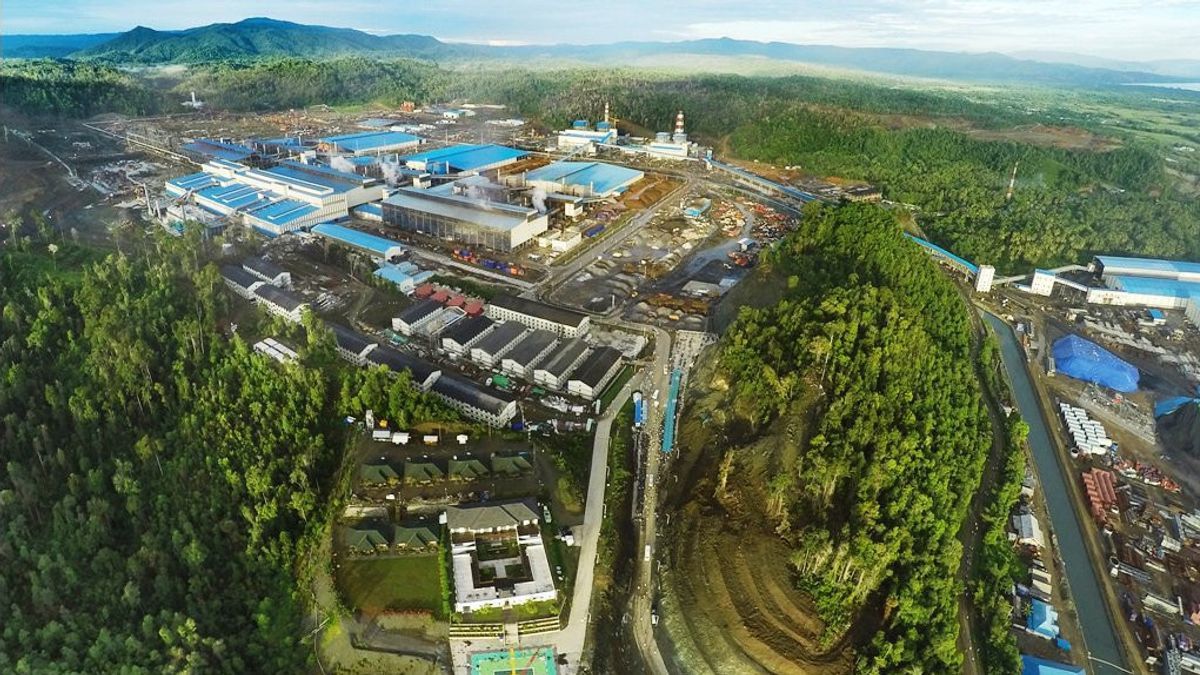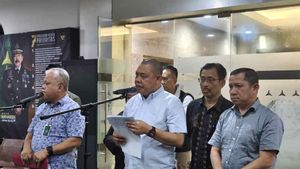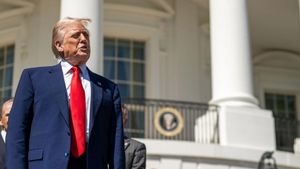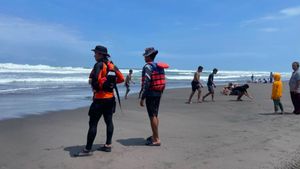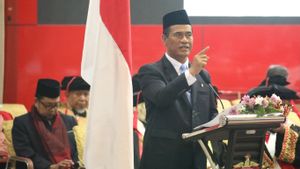JAKARTA - Indonesia has abundant natural resources, including the largest nickel reserves in the world. 27 percent of the world's nickel market is controlled by Indonesia.
It's just that, now there has been a shift from conventional energy to renewable energy sources. One of them is the use of lithium batteries, as an environmentally friendly source of electrical energy.
Indonesia also has enormous potential to develop a nickel-based industry in the future. With this great potential, it is hoped that Indonesia can become a developed country based on the battery industry.
Seeing this potential, the government has firmly stated that Indonesia will not export raw nickel because its focus is on the added value of nickel, which is much more valuable. This can be seen from the issuance of the Minister of Energy and Mineral Resources Regulation Number 11 of 2019 concerning the Second Amendment to the Regulation of the Minister of Energy and Mineral Resources Number 25 of 2018 concerning Mineral and Coal Mining Business.
Where the government will accelerate the ban on nickel ore exports from 2022 to January 1, 2020. Unfortunately, this ban is not supported by regulations that provide protection to mining entrepreneurs. This makes it difficult for domestic miners to sell their products.
Secretary General of the Indonesian Nickel Miners Association (APNI) Meidy Katrin said there were 3.8 million tonnes of nickel with a grade of 1.7 percent whose status was unclear due to the ban on the export of nickel ore or ore since the beginning of 2020.
Meidy said, if miners force themselves to mine and sell ore with a 1.7 percent grade to local smalter, the price offered is relatively low compared to the mineral benchmark price (HPM) free on board (FoB).
"This means that 1.7 is not accepted by the smelter, if exports accept it means that we still get profit. Our last 1.7 FOB is still selling at 46 dollars. 1.7 received by local smelters for 10 dollars is good, if it is accepted," he said, in a statement. a discussion entitled Prospects of Domestic Nickel Industry, at Sahid Sudirman Center, Friday, February 28.
According to Meidy, smelters should be able to absorb nickel with a grade of 1.7 percent or lower. Because, before the government finally banned it, there were many requests from outside for national nickel.
"Can you accept a smelter below 1.8? Very, very much. The proof is that we exported 1.65 yesterday. All of them were accepted. In fact, buyers flocked to come. Why do the smelters that are already standing here have too many strange requests? While the smelters are there. itself is the same from outside as well as here, "he explained.
"Why when the smelter is here we are getting worse, falling, and running out? Should we miners be more alive? Because the smelter already exists, cutting logistics and export costs," he continued.

The ban on exports of nickel ore with low grade or below 1.7 percent, said Meidy, was not accompanied by the absorption capacity of domestic smelters. Currently, local smelters do not want to absorb low grade nickel below 1.8 percent. As a result, many miners are mining illegally.
In order to survive, said Meidy, miners now have to find and sell nickel with a 1.9 percent grade. Smelters still rejected nickel with a 1.9 percent grade of nickel because the results of the survey by the appointed surveyor said the level was below 1.8 percent.
"Smelters never use a surveyor appointed by the Ministry of Trade and the Ministry of Energy and Mineral Resources. We pay royalties, pay obligations and others using a surveyor determined by the government. Smelters use another surveyor, in the end our levels are rejected," he said.
Therefore, Meidy asked the government to mediate this problem with the smelter entrepreneur. "If a miner doesn't live, how can a smelter live? The potential for nickel content in Indonesia is enormous, but if this smelter only uses levels of 1.8 percent to 5 years, this smelter will definitely close all," he said.
Meanwhile, the Chairman of the Indonesian Young Entrepreneurs Association (HIPMI) Mardani H. Maming said that nickel with a content of 1.8 percent is at a risk because there is no certainty about the mineral benchmark price received by smelters, which will be regulated if it is not in accordance with HPM. get penalized.
"This is what the government hopes to be able to immediately formulate a nickel benchmark price," he said.
Data from 30 mining companies shows that the average production benchmark price (HPP) for nickel ore is US $ 20.34 metric tons. So that in the domestic market, 1.8 percent grade nickel ore is valued at US $ 20 metric tons. It is considered that this will make the miners bear losses and not to mention other costs arising from this process.
The current international price for nickel ore 1.8 percent FoB Philippines is priced between US $ 59 per wett metric ton (wmt) and US $ 61 wmt. So, if the government proposes a selling price for domestic nickel ore with a 1.8 percent FoB grade of 38 US dollars to 40 US dollars wmt, it is a reasonable price.

Responding to the complaints of nickel entrepreneurs, the Ministry of Energy and Mineral Resources (MEMR) will issue a regulation regarding the trading system and domestic nickel prices in March 2020. This regulation will regulate the Mineral Reference Price (HPM) between miners and smelters so that it is in accordance with the calculation of the Base Price. Production (HPP) of nickel ore.
ESDM Ministry's Mineral Development and Business Director Yunus Saefulhak said the regulation aims to accommodate the wishes of miners and smelters in nickel transactions.
"The form is a Kepmen (Ministerial Decree), because this is a need that must be accommodated immediately by the miners' wishes and at the same time fixing the nickel buying and selling governance," he said.
The regulation will regulate the Mineral Reference Price (HPM) between miners and smelters so that it is in accordance with the calculation of the Cost of Production (HPP) of nickel ore.
Chairman of the Indonesian Young Entrepreneurs Association (Hipmi) Mardani H. Maming hopes that the HPM determined by the government can provide benefits to miners and smelter entrepreneurs.
"HPM should be regulated by paying attention to the principles of certainty and justice, without harming all parties, including smelter owners, miners, especially the state and the Indonesian nation," he said.
The English, Chinese, Japanese, Arabic, and French versions are automatically generated by the AI. So there may still be inaccuracies in translating, please always see Indonesian as our main language. (system supported by DigitalSiber.id)
